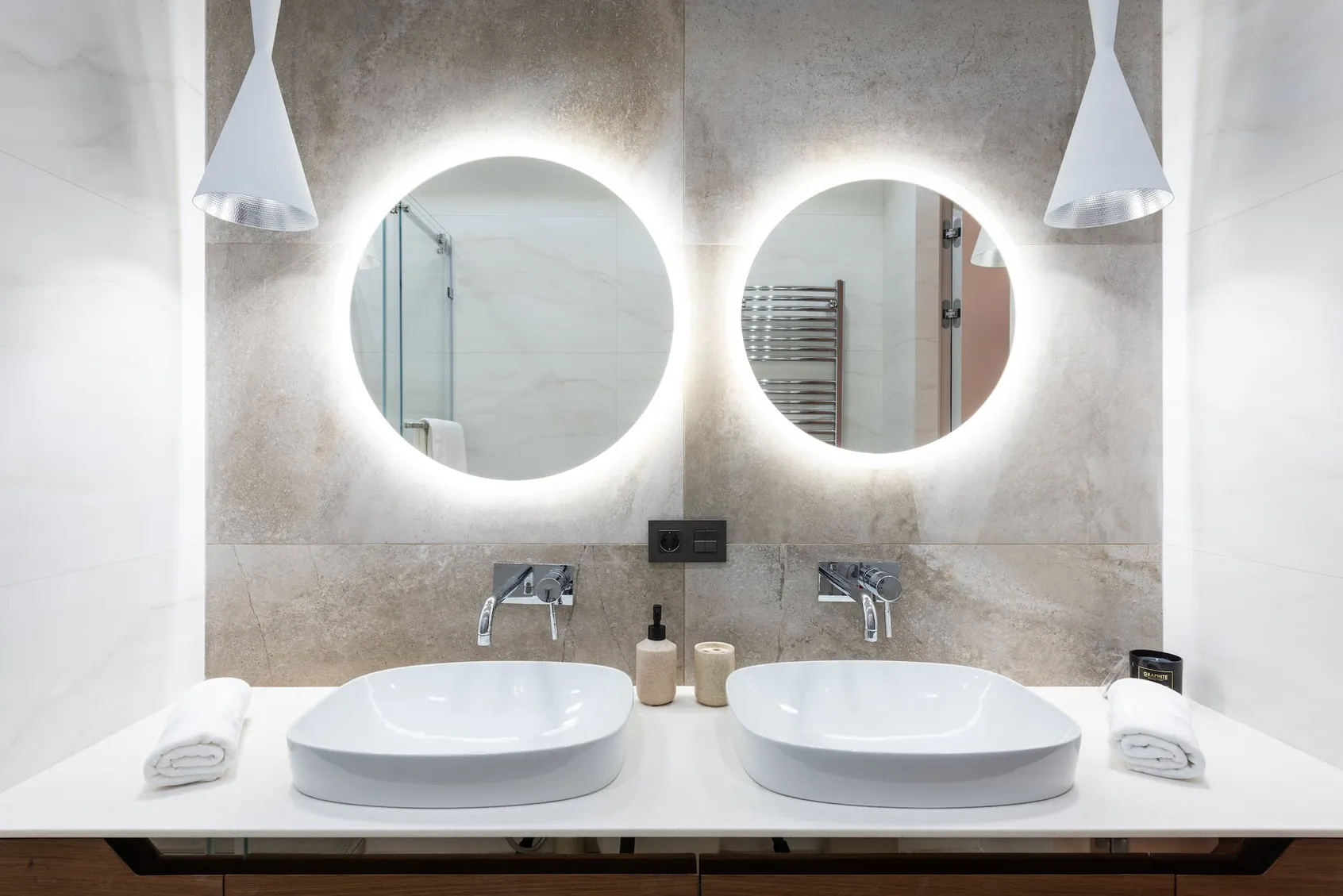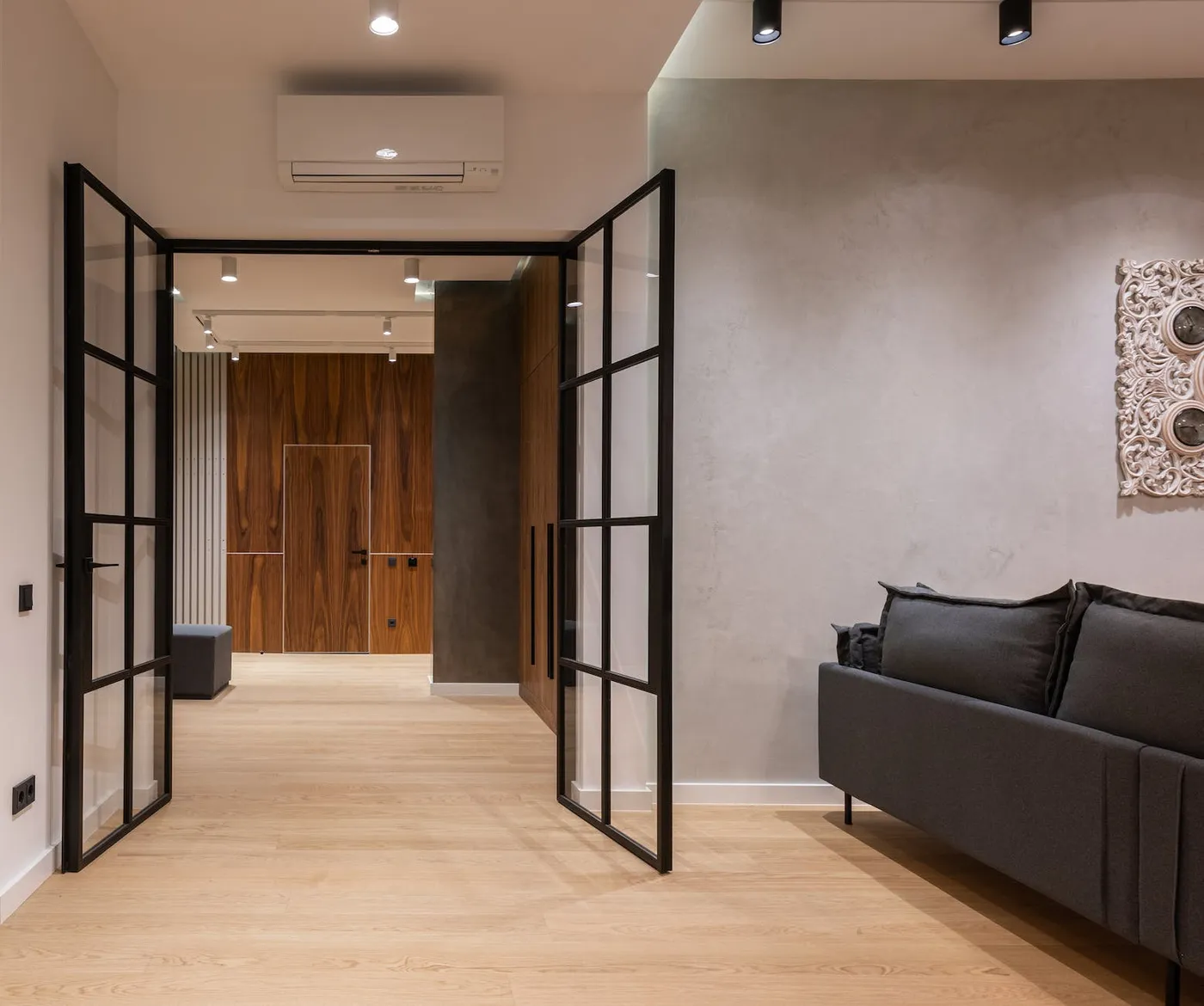Securing your bathroom door without a key lock can be challenging, especially if you live in a shared space and want to ensure privacy. Fortunately, several ways exist to protect your bathroom door without needing a key lock. Many effective solutions don’t require a key, from installing a deadbolt to adding a privacy latch.
In this article, we’ll explore some of the options available to help you secure your bathroom door lock without a key.
Securing Bathroom Door Lock Without Key
Securing your bathroom door without a key lock is an important task to consider when it comes to home safety and privacy. Keeping your bathroom door shut and secure without a key lock can be difficult. However, a few solutions can be implemented to help ensure your door stays closed and secure while still allowing you access to your bathroom.
The first solution is to install a door handle with a thumb latch. These are available in various designs and styles and can be found in hardware stores or online. A thumb latch is a small lever that can be locked and unlocked without a key. This can provide a secure solution for those looking for a way to keep their bathroom door closed without needing a key lock.
Another solution is to install a door knob with a privacy lock. These types of locks are designed to keep the door from being opened from the outside. They usually feature a spring-loaded latch that can be activated inside the bathroom by pushing down on the knob. This type of lock is a great solution for those needing extra privacy when using their bathroom.
Finally, several keyless entry systems are also available for those who prefer a more traditional approach. These systems typically feature a combination of keyless, electronic, and combination locks.
Keyless entry systems can be used to secure your bathroom door by requiring a unique code to be entered before the door can be opened. This type of system is a great option for those who want to feel secure in their bathroom but want to use something other than a key to unlock the door.
No matter which solution you choose, ensuring your bathroom door is secure and you can access it when needed is important. Following these tips, you can keep your bathroom door secure without needing a key lock.

Using A Deadbolt Lock
A deadbolt lock is ideal if you’re looking for a way to secure your bathroom door without a key lock. Deadbolt locks are simple, effective, and easy to install. They are relatively inexpensive and easy to find in most home improvement stores. Installing a deadbolt lock is a great way to ensure that your bathroom is secure and that no one can enter without your permission.
Deadbolt locks are a type of lock that is built into the door jambs. They are designed to be extremely secure, as they have a long bolt that extends from the doorframe into the door itself. This makes it nearly impossible for anyone to pick the lock or force their way into the bathroom. Deadbolt locks come in various sizes and styles, so you can pick the one that best fits your needs.
When installing a deadbolt lock, it is important to ensure that you follow the instructions that come with the lock. These instructions will walk you through the entire installation process step-by-step. Using the right tools when installing a deadbolt lock is also important. You should use a drill to make the holes, and you may need to use a level to ensure the lock is installed correctly.
Once you have installed the deadbolt lock, testing it to ensure it works properly is important. This can be done by locking the door from the inside and trying to open it from the outside. If the door does not open, then the lock is functioning properly.
Installing A Door Barricade
Securing your bathroom door without a key lock can be a challenge, but it is possible to do by installing a door barricade. A door barricade is a device mounted on the door frame that prevents the door from being opened from the outside. It is a great solution for those who want to close their bathroom door without taking the time and expense of installing a key lock.
Installing a door barricade is quite simple, and most kits will come with all the necessary hardware, such as screws and anchors. First, you will need to measure the width of the door, as this will determine the size of the barricade needed. After the measurements, you can purchase the right barricade and install it inside the door frame. The installation is simple; you only need a drill and a few basic tools.
Once the barricade is in place, you can secure the door by sliding the lock bar into the door jamb and engaging the latch. This will keep the door locked; no one can access the bathroom without your permission. With a door barricade, you can easily secure your bathroom without needing a key lock.
Installing A Slide Bolt Lock
Securing a bathroom door without a key lock can seem difficult, but it doesn’t have to be. Installing a slide bolt lock is one of the simplest and most effective ways to secure a bathroom door. Slide bolt locks are relatively inexpensive, easy to install, and available at most home improvement stores. Installing a slide bolt lock is a relatively straightforward process.
The first step is to measure the door and then the slide bolt. The slide bolt should be wide enough to cover the entire width of the door and deep enough to fit into the door frame. Once the measurements are taken, the next step is to mark the location of the slide bolt lock on the door.
After marking the location of the slide bolt lock, the next step is to drill small holes in the door at the marked points to insert screws. The screws should be positioned to hold the lock when the door is closed. The slide bolt lock should be placed in the holes and secured with the screws.
Once the slide bolt lock is secured to the door, it can be tested to ensure it works properly. The slide bolt should be able to open and close easily and securely. It is also important to ensure the slide bolt is properly aligned with the door frame so it does not interfere with the door’s closure. Once the slide bolt is properly aligned and secured, the door can be shut, and the slide bolt will prevent anyone from entering the bathroom without a key.

Installing A Door Chain
Securing your bathroom door is important for ensuring privacy and safety in the home. Fortunately, even if you don’t have a key lock, you can still secure your bathroom door by installing a door chain.
Door chains are devices attached to the door and the door frame, allowing the door to be opened a few inches while still providing security. To install a door chain, you will need a few basic tools and supplies, such as a drill, a screwdriver, a door chain, and screws.
First, attach the door chain’s receiver bracket to the door frame by drilling two holes and inserting screws. Then, attach the door chain’s slide bracket to the door by drilling two holes and inserting screws. After both brackets are in place, insert the door chain into the receiver, slide them, and secure them with the screws provided. Finally, test the door chain to ensure it is securely in place and functioning properly.
Adding A Door Jammer
Securing your bathroom door without a key lock is easier than you think. Installing a door jammer is one of the best methods for doing so. Door jammers are a security device that secures the door from opening from the outside. They are easy to install and require no tools.
A door jammer is a long metal rod with a rubber foot at one end and an L-shaped bracket at the other. To install it, you simply slide the rod between the door and the floor and then secure the L-shaped bracket to the bottom. The rubber foot then holds the rod in place and prevents the door from being opened from the outside.
Door jammers are not only effective, but they are also affordable. Most door jammers are available for less than $30 and come with easy-to-follow instructions. Furthermore, they are available in various colors and finishes, so you can find one that matches the style of your bathroom door.
Replacing Doors With Secure Models
Replacing doors with secure models is a great way to ensure your bathroom door stays secure without needing a key lock. When selecting a new door, it is important to consider the material it is made of. Steel and fiberglass are both excellent choices for security, as they are extremely durable. They are also fire-resistant, which is a great bonus.
Another option is to install a heavy-duty deadbolt lock, making it much more difficult to break into the bathroom. Additionally, consider adding a security bar to the door. This device attaches to the door frame and has a latch that can be locked from the inside. This will make it impossible for intruders to enter the bathroom, even with a key.
When installing a new door, it is important to ensure it fits securely into the frame. If the door is too small or too large, it can create a security risk. Additionally, make sure that the door is properly sealed and insulated.
This will help prevent drafts and will also keep the bathroom private. Finally, if the door has a window, install a security film. This will make it difficult for someone to see through the window, increasing the security of the bathroom.

Adding A Reinforcement Plate
Securing your bathroom door without a key lock is important for keeping your home safe and secure. Consider adding a reinforcement plate to your door to provide an extra layer of protection.
A reinforcement plate is a metal plate bolted over the existing door lock or latch, making it more difficult for someone to force the door open. Installing a reinforcement plate is an easy and inexpensive way to add an extra layer of security to your bathroom door.
When choosing a reinforcement plate for your bathroom door, select one made from thick, sturdy metal and designed to resist break-ins. If you are still deciding what reinforcement plate to purchase, contact a professional locksmith or home security company for advice. Once you have chosen the right reinforcement plate for your bathroom door, you can install it in a few simple steps.
First, you will need to remove the existing door latch and lock. This can be done by unscrewing the screws that hold the latch and lock in place. Then, you must measure the area where the reinforcement plate will be installed and cut the metal plate to fit. Once the reinforcement plate is cut to the right size, you can attach it to the door frame using the screws removed from the latch and lock.
Finally, you can install the new door latch and lock to complete the installation. Be sure to use high-quality screws to withstand pressure and wear and tear. Once the installation is complete, you can test the reinforcement plate to ensure it is properly secured.
Installing A Hasp Lock
Having a secure bathroom door is a must for any home, especially if you have children or pets who may wander in. Many bathroom doors come with a key lock, but not all do. If you do not have a key lock, there are other ways to secure your bathroom door without installing a new lock. One option is to install a hasp lock.
A hasp lock consists of a metal loop secured to one side of the door and a clasp secured to the other side of the door. A pin connects the loop and clasp, and when the pin is inserted into the clasp, the two pieces are secured, and the door is locked. This type of lock does not require a key, which makes it ideal for anyone who wants to avoid carrying a key around for their bathroom door.
The hasp lock can be installed in a few easy steps. First, you must measure the door and purchase the appropriate size hasp lock. Once you have the lock, you must secure the loop part of the lock to one side of the door with screws. Then, you must secure the clasp part of the lock to the other side of the door with screws. Once the two pieces are secured, insert the pin into the clasp and lock the door.
Securing A Pocket Door
Consider installing a pocket door if you want a secure way to keep your bathroom door closed without a key lock. A pocket door is a sliding door that slides into a cavity in the wall, making it virtually invisible when closed. It offers a great alternative to traditional door locks, as a key or other means cannot be opened from the outside.
Installing a pocket door is relatively easy and can be done by a professional or a DIYer with the right tools. The first step is to measure the width and height of the door opening and then purchase a pocket door frame that fits the opening. The frame is then attached to the wall studs with screws, and a pocket door track is installed. Once the track is in place, the door slides into the frame, creating a tight seal.
One of the main advantages of a pocket door is that it is much more secure than a traditional door lock. The door is very difficult to open from the outside, as the door is completely enclosed in the wall. Another advantage is that the door is completely hidden when closed, making it harder for someone to access the room. Additionally, the door can be opened from both sides, allowing you to have a private entrance and exit.
You can also install a keyed deadbolt on the pocket door for added security. This adds an extra layer of security, as it requires a key to open the door from the outside. You can also install a door handle with a locking mechanism that requires a key to open the door.
Installing A Door Knob Lock
Securing your bathroom door without a key lock can be accomplished by installing a door knob lock. This type of lock does not require a key and can be installed in a few simple steps. You will need a few basic tools, such as a drill, screwdriver, level, and measuring tape.
Before beginning, you should measure the door to determine the size of the door knob lock you will need. Once you have the correct size, you must locate the location on the door where the lock will be installed. This is typically the side of the door opposite the doorknob.
Using the drill, create two holes in the door of the appropriate size for the bolts to hold the lock in place. Once that is done, you can fit the bolts into the holes and use the screwdriver to screw them into place. Next, you must fit the door knob lock into the holes and secure it with the screws. Use a level to ensure the lock is in the proper position before tightening the screws.
Finally, you must take a few extra steps to secure the lock. This can include adding a strike plate to the door frame, installing a deadbolt above the door knob lock, or using a door chain. After these steps, you can feel confident knowing your bathroom door is securely locked without needing a key.
Conclusion
In conclusion, there are many ways to secure your bathroom door without a key lock. Depending on the type of door and security desired, different methods such as door jammers, strike plates, door blockers, and door chains can ensure your door is secure when locked. All solutions are cost-effective, easy to install, and provide peace of mind that your bathroom is safe from unwanted visitors.
Frequently Asked Questions:
What are the best ways to secure a bathroom door?
Bathroom doors come in different types, including hinged, sliding, and pocket doors. Hinged doors swing and have locks, while sliding doors are good for limited space. Pocket doors slide into the wall to save space. Materials like wood, glass, and metal can be used to construct these doors.
Is it possible to secure a bathroom door without a key lock?
Yes, securing a bathroom door without a key lock is possible. Many alternatives exist, such as a sliding bolt lock, a door chain, or a deadbolt. You can also install a door handle or knob that requires a code to unlock.
Are there any other alternatives to a key lock for a bathroom door?
Yes, several alternatives to a key lock for a bathroom door include a thumb-turn lock, a deadbolt, a push-button lock, a handle-style lock, a digital lock, a magnetic lock, and a keypad lock.
What security risks are associated with not using a key lock on a bathroom door?
The primary security risk associated with not using a key lock on a bathroom door is the risk of unauthorized access. Anyone can enter the bathroom without a key lock, making it vulnerable to theft, vandalism, or even physical harm. Additionally, any hazardous materials in the bathroom, such as cleaning supplies, may be accessed by unauthorized individuals, potentially leading to injury or health risks. Finally, with a key lock, ensuring privacy in the bathroom is easier, which can be a concern for individuals and businesses.
